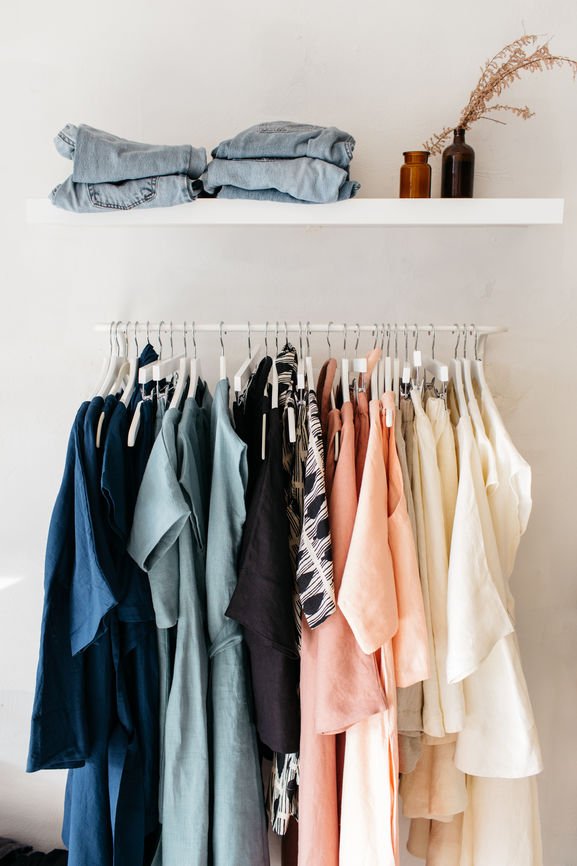
How To Overcome Thrift Fatigue
“Thanks, I Thrifted It”
There is almost nothing more satisfying than when someone asks where I bought an article of clothing that I found at the thrift store.
I can proudly say that about 90% of my wardrobe is thrifted or secondhand. And while being a thriftaholic has its downsides, the affordability and unique finds make it all worthwhile.
However, I understand that this isn’t exactly everyone’s experience with thrift shopping. I can’t count how many times I’ve been told that someone doesn’t enjoy thrifting because of how “overwhelming” thrift stores can be.
I totally get it.
While many cute-sy, curated vintage shops have popped up in LA, New York, and other big cities, the experience of going to a traditional thrift store isn’t quite the same. Besides being an absolute playground for germs and a trigger for allergies, thrift stores are often huge and unorganized. It’s easy to feel anxious about not getting through everything in the store.
I felt this anxiety a lot when I first started thrifting. I was appalled at how my fellow shoppers would literally trudge from aisle to aisle, carefully sifting through every single piece of clothing on the crowded racks. For a while, I tried this out, but always ended up exhausted.
Over time, I’ve developed a system that has made the process of thrifting far less overwhelming and way more enjoyable. While I encourage everyone to find a system that works best for them, I thought that sharing some of my tips might be helpful for those of you looking to overcome thrift fatigue.
Before your trip
When it comes to thrifting, the work you do beforehand is just as important as the actual thrifting day. Getting familiar with the styles you want to incorporate into your wardrobe will not only help prepare you for your trip to the thrift store, but will also prevent you from buying items simply because they’re “on-trend” at the moment.
“Curating outfit mood boards gives me a better idea of what I’m looking for when I go thrifting.”
There are many ways to get more familiar with your personal taste. Saving photos to your saved photos feed on Instagram is a great way to keep all of your outfit inspo in one place. My favorite tool for this practice, however, is Pinterest—the most underrated mood-boarding tool of all time. Pinterest has helped me immensely in finding my personal style. My life completely changed when I learned that you can pin images directly from Tumblr to Pinterest. You can also pin from Instagram, or upload your own images to pin to your boards.
I could write an entire article about the gospel of Pinterest. (Don’t worry, I won’t.) I will say that curating outfit mood boards gives me a better idea of what I’m looking for when I go thrifting. It helps to have certain color palettes, washes of denim and fabrics in mind before I even step foot into the store. I’ve found that this prep work makes skimming the racks an easier and overall more streamlined experience.
The day of your trip
Now that you know what you’re looking for, the process should be ten times more smooth. Still, there are some steps you can take in-store that will help as well.
Think about what you want. Before I go into the store, I usually try to make a mental checklist of what I’m looking for. Sometimes, I’ll even skim through my Pinterest boards before I go inside. After I have my mental checklist, I’m ready to dive in!
Grab a cart. Even if you only plan on picking up a few items, a cart will make toting around your finds less stressful. I’ve found that being able to see my items heaped up together in a cart lets me know whether or not I’m sticking to my mood board or picking up items just because.
Listen to music. I love to bring in headphones and listen to music while I scan the racks. This allows me to have control over the vibe of my shopping experience. (Not to mention, I’m not always a fan of my thrift store’s choice in tunes!)
Scan, don’t sift. Though some people find it helpful to sift through every single item of clothing on the rack by hand, I find it stressful. Rather than sifting, I have certain things that I like to scan for. I scan for certain items I’ve pinned to my mood board, as well as certain colors, fabrics and textures. When it comes to denim, I only scan for high-waisted pants. As you thrift more, you’ll develop a better eye for what you like. Scanning will become more second-nature and will save you so much time.
Don’t go down every aisle. Prioritize the aisles where you know you’ll find the items you’re looking for. Some days I go thrifting with the singular hope of scoring a pair of dark wash jeans. On days like that, I’ll prioritize the denim aisle. If I feel so inclined to wander down the dress aisle while I’m there, I will. I always find it’s most helpful to remind myself what I came for.
In the dressing room
Because most thrift stores don’t accept returns, it’s crucial to try on items of clothing before you purchase them. I pretty much have one dressing room rule that I stick by religiously: if you’re not 100% sure about it, then don’t buy it.
“I have one dressing room rule that I stick by religiously: if you’re not 100% sure about it, then don’t buy it.”
I’ve found that buyer’s remorse can be a huge side effect of thrift shopping. It’s easy to buy things just because they’re cheap, and then regret it later. It’s really important for me to be genuinely excited about the clothes that I buy. So, if I have even just an ounce of uncertainty about an item, I don’t buy it! Nine times out of ten, I don’t end up missing the item anyway.
I hope you find these tips helpful for your next thrifting excursion! Let us know your thrifting hacks in the comments below 💛
RELATED READING
Celeste M. Scott is the Social Media Coordinator at The Good Trade. She is a writer and photographer who is passionate about film and Internet culture. She can often be found sifting through the racks at her local Savers. You can find her work on her website and Instagram.
